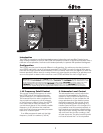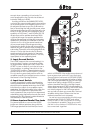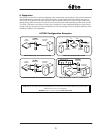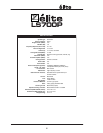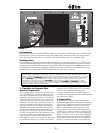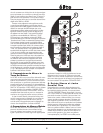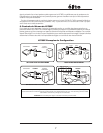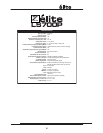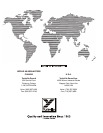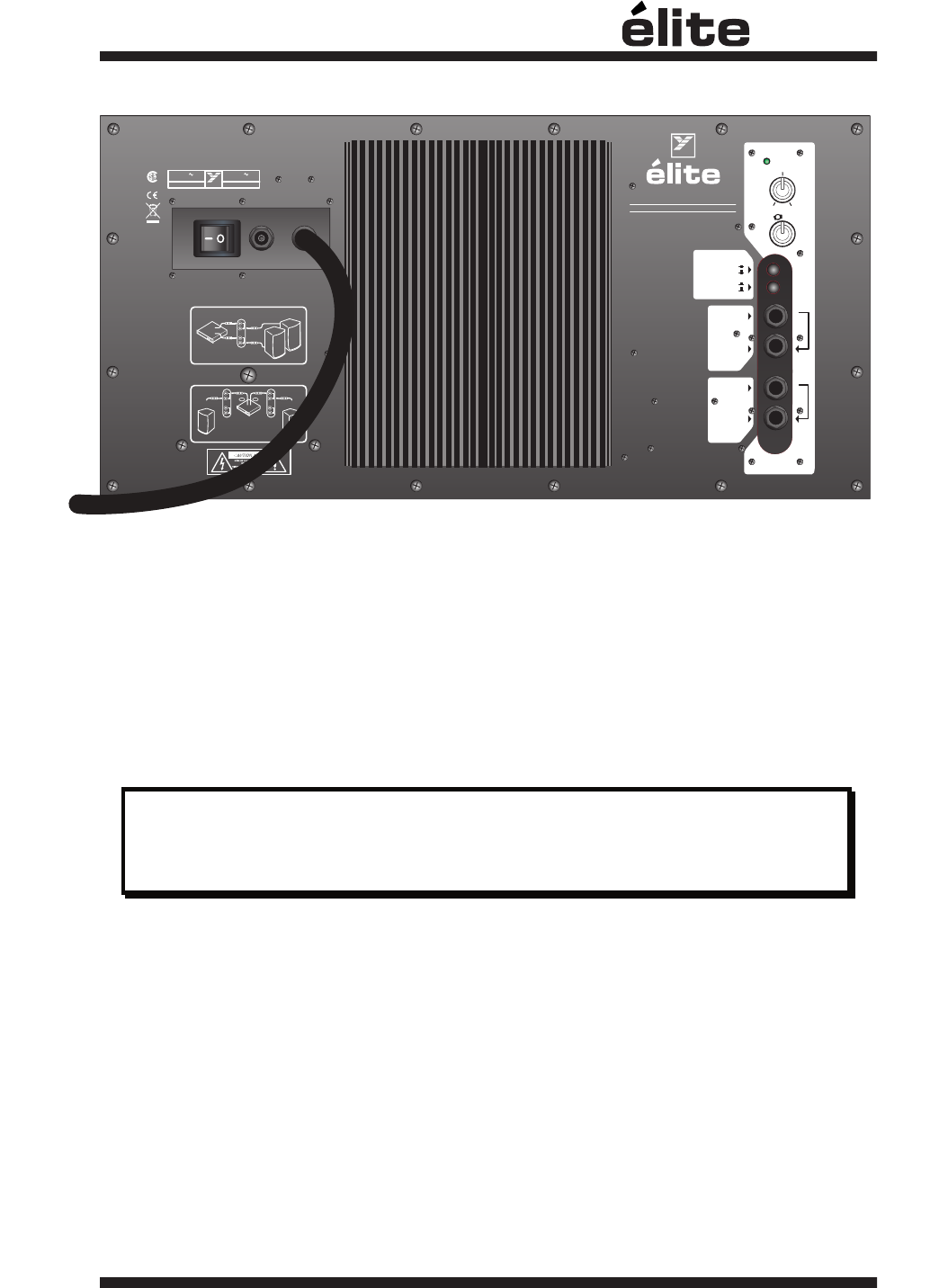
1
Introduction
The LS700P is a premium quality integrated powered subwoofer and amplifier. Created as an
easy-to-setup addition to your PA, the LS700P will extend the bass of a typical sound system with a
minimum of complication, and hence is intended primarily to operate with speaker level signals.
Configuration
The LS700P may be used in several different configurations, the minimum standard system is
one LS700P used with a pair of full range speakers. The LS700P accepts the signal from sepa-
rate Left and Right sources simultaneously. It then combines them into one signal (to drive the
internal speakers). When used in a setup where only one signal is provided to a speaker, such
as a mono system or stereo with more than one LS700P, use either the Left or Right input.
LS700P
Yorkville
DESIGNED & MANUFACTURED BY YORKVILLE SOUND • TORONTO, CANADA
INPUT GROUND
INPUT LEVEL
LEFT
(
mono
)
RIGHT
USER NOTE:
This Subwoofer may be driven from Speaker Level
or Line Level signals. If an élite processor is used,
this Subwoofer should be plugged into the SUB
output of the processor. The High–Frequency
Cutoff should be set to 150-Hz and the Input Level
should be set to LINE. For
Line Level operation a
balanced (Tip Ring Sleeve)
cable should be used. If the
system is being operated
without a processor, this
Subwoofer can be
connected to the output of
the power amplifier as shown
in the diagrams and the
Input Level should be set to
SPEAKER. If none of the
equipment has a U-ground,
the INPUT GROUND should be set to
GROUNDED. Otherwise the INPUT
GROUND should be set to the
position that best minimizes the hum.
Refer to the Owner's Manual
for other modes of operation
HIGH
FREQUENCY
CUT OFF
125 Hz
POWER
100 Hz 150 Hz
SUBWOOFER
LEVEL
PARALLEL
THRU
I
N
P
U
T
PARALLEL
THRU
I
N
P
U
T
UNGROUNDED
GROUNDED
SPEAKER
LINE
ON POWER
LS700P
SUBWOOFER
POWER
AMPLIFIER
FULL–RANGE
SPEAKERS
Left
Right
Left
Right
ONE SUBWOOFER PER SYSTEM
LS700P
SUBWOOFER
LS700P
SUBWOOFER
POWER
AMPLIFIER
FULL–RANGE
SPEAKER
FULL–RANGE
SPEAKER
TWO SUBWOOFERS PER SYSTEM
RL
CAUTION: REPLACE WITH
SAME TYPE FUSE AND RATING
ATTENTION: UTILISER UN FUSIBLE DE
RECHANGE DE MEME TYPE ET CALIBRE
-5
-10
+10
+24
+20
dB
0
A-Z100B / 1v40
TYPE: ES700P
Yorkville
230V
50Hz 1.3A
120V
60Hz 2.5A
LR 21877
FUSE: T3,15A GDC
FUSE: T5.0A 250V
SLO~BLO
For normal operation connect the
LS700P
LS700P
LS700P
LS700P
LS700P LS700P
just like an ordinary speaker along with the full range speakers. The
"INPUT LEVEL" switch should be set to "SPEAKER
." If the audio source does not have a "U" ground, eg. a ground pin on
the AC cord, the "INPUT GROUND" switch must be set to "GROUNDED." The may be wired before or after
the full range speakers. Use the left and right inputs when using a single in a stereo system. Use either
the left or right inputs when using separate 's for each side or when used in a mono system. The
does not alter the signal to the full range speakers in any way. The will not draw any
power from the amplifier driving the full range speakers. Please note that an external cross-over is not necessary.
1. Hi Frequency Cutoff Control
This control varies the frequency at which
the LS700P rolls off the high frequencies.
This provides part of a crossover function.
This crossover function also combines with
the natural low frequency roll off inherent
of the full range cabinet (when the LS700P
is not used with an élite processor). This
control should be set to the closest possible
frequency to 20 Hz below the crossover
point that the full range speakers processor
uses as it's crossover point.
If an élite processor is used, set the high
frequency cutoff to maximum (160 Hz)
2. Subwoofer Level Control
The subwoofer level control adjusts the
amount of bass added to the sound
system by the LS700P. This adjusts for the
relative sensitivity of the companion full
range speakers and the desired system
frequency response. This control should
be set by listening while operating at a
medium level and then not changed. It is
not possible to set this control properly at
high levels since the limiter is determining
the output level. Setting the level too high
will over load the circuitry causing a loss
of bass dynamics. The level control should
not be set above the 9 o’clock position





